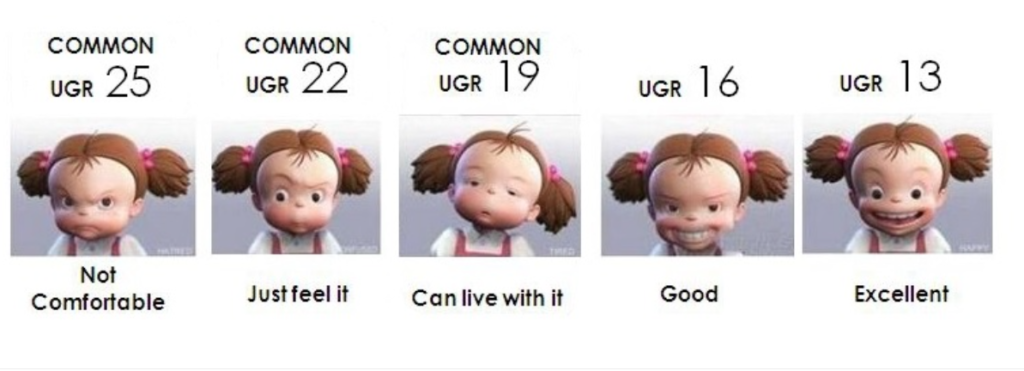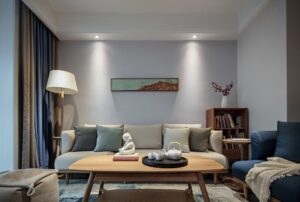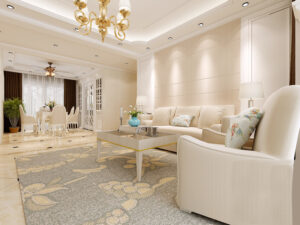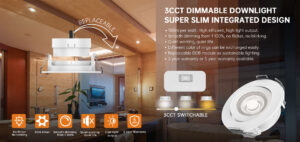In today’s fast-evolving workplace environments, lighting quality is no longer just about brightness—it’s about comfort, productivity, and well-being. One critical yet often overlooked metric in this realm is the Unified Glare Rating (UGR), a standardized measure of glare in lighting systems. As organizations increasingly prioritize employee health and efficiency, understanding UGR has become essential for architects, facility managers, and business leaders alike.
What Is Unified Glare Rating (UGR)?
UGR, which stands for Unified Glare Rating, is a metric for assessing the glare effect of indoor lighting systems. It specifically evaluates ‘psychological’ glare, which is disturbing but doesn’t necessarily reduce visual performance. The UGR is a measure of the subjective response to light emitted by a lighting device in a visual environment that causes discomfort to the human eye. This rating helps lighting designers control the anti-glare level in a lighting environment, creating a more visually comfortable space for occupants. The UGR value is an important parameter of lamps, and according to the European indoor lighting recommendation EN 12464-1 standard, the lower the UGR value means the better the visual comfort.
UGR Scale and Its Implications
The UGR scale ranges from 10 to 30, with higher values indicating greater discomfort:
- 10: Imperceptible glare
- 13: Just perceptible
- 16: Perceptible
- 19: Just acceptable
- 22: Unacceptable
- 25: Just uncomfortable
- 28: Uncomfortable
For most indoor environments, a UGR of 19 or lower is considered acceptable.

What are the main benefits low UGR?
Understanding the Unified Glare Rating (UGR) offers several key benefits, primarily related to enhancing comfort, productivity, and well-being in indoor environments. Here’s a summary of the main advantages:
- Enhanced Visual Comfort: UGR helps minimize glare, reducing discomfort and eye strain during visual tasks, which leads to a more comfortable environment.
- Improved Productivity: By reducing glare, UGR contributes to better concentration and focus in workspaces, ultimately improving productivity.
- Health and Well-being: Managing UGR promotes healthier indoor environments by reducing eye fatigue, headaches, and potential vision problems caused by prolonged exposure to high levels of glare.
- Regulatory Compliance: Adhering to UGR standards ensures compliance with workplace safety and health regulations, which often mandate specific UGR limits.
- Energy Efficiency: Opting for LED panels with lower UGR values can improve energy efficiency by using lighting more effectively, reducing energy waste.
- Aesthetics and Ambiance: UGR considerations contribute to a visually appealing environment by minimizing glare, allowing lighting fixtures to blend seamlessly
What would affect UGR?
Different lighting fixtures can significantly affect the Unified Glare Rating (UGR) due to factors such as size, shape, angle, and color temperature8. Here’s how different aspects of lighting fixtures influence UGR:
Luminous Area: Luminaires with larger luminous surfaces, such as 2’x4’ panels, tend to have lower UGR values compared to smaller ones like 1’x4’ or 2’x2’ fixtures.
- Lumen Output: Luminaires with lower lumen packages help achieve more acceptable UGR scores. Higher lumen output is associated with higher UGR.
- Light Distribution: Products with lower candela at angles of 60 degrees and higher, compared to volumetric distributions, are preferable. Smaller lighting beam angles result in lower UGR1. Asymmetric light distribution can effectively reduce Glare Rating (GR), which is related to UGR.
- Optics and Shielding: For small aperture luminaires (downlights), well-shielded optics should be chosen.
- Mounting and Positioning: Higher ceilings and higher luminaire positioning can help achieve more acceptable UGR scores. Avoiding installing lamps in interference areas can also minimize UGR.
- Glare control: The higher the GF mark value, the better glare limitation provided by the installation
According to a DesignLights Consortium (DLC) fact sheet, the factors that affect UGR include average luminaire luminance. Acuity Brands also indicates that higher lumens negatively impact UGR ratings.

What Does UGR Measure?
UGR quantifies the discomfort glare perceived by an average observer in a given space. This discomfort can lead to visual fatigue, reduced visibility, and decreased productivity. The UGR system considers several factors, including the luminance of light sources, their position relative to the observer, and the room’s dimensions and surface reflectances.
“Discomfort glare can significantly impact the comfort and efficiency of a workspace. By understanding and managing UGR, lighting designers can create environments that are both productive and pleasant.”
UGR Values and Their Significance
UGR values typically range from 10 to 30, with lower values indicating less glare and better visual comfort. For instance, a UGR below 19 is considered suitable for most office work, while values above 25 may cause discomfort. Here’s a breakdown of recommended UGR levels for different environments:
| Environment | Recommended UGR |
|---|---|
| Office | ≤ 19 |
| Classroom | ≤ 16 |
| Industrial | ≤ 22 |
| Corridors | ≤ 28 |
Calculating UGR
The UGR calculation involves a formula that accounts for the luminance of light sources, background luminance, and the solid angle of the luminaire from the observer’s position. This formula ensures that UGR values fall within the standard range. Specialized software is often used to simulate different lighting setups and calculate the resulting glare.
Minimizing UGR for Better Visual Comfort
To reduce UGR and enhance visual comfort, several strategies can be employed:
- Use luminaires with lower lumen packages or larger luminous surfaces.
- Choose luminaires with well-shielded optics to reduce direct glare.
- Increase room surface reflectances to enhance background luminance.
- Optimize luminaire spacing and mounting height to minimize glare.

The Future of UGR: Trends to Watch in 2025 and Beyond
As technology advances, UGR is becoming more integrated into smart building systems. Innovations such as AI-driven lighting controls and biophilic design principles are pushing the boundaries of what’s possible. For example, AI can now predict and adjust lighting conditions in real-time to maintain optimal UGR levels throughout the day.
Moreover, regulatory bodies are beginning to mandate UGR compliance. The European Union’s updated Workplace Directive, set to take effect in 2026, will require all new office constructions to meet a maximum UGR of 19. Similar regulations are expected to emerge globally, making UGR a cornerstone of workplace design.
Optimizing Lighting Solutions with Radians
Radians is a professional lighting manufacturer specializing in LED lighting solutions, including LED downlights, LED panel lights, LED track lights, and wall lights. Their anti-glare eye protection series is particularly notable for its low UGR features, making it ideal for education, office, and exhibition lighting environments.
Innovation and Quality Assurance
Radians prioritizes innovation and high-quality product design. The factory implements a comprehensive quality control system, ensuring rigorous standards are met from raw materials to finished products. This commitment to quality ensures that all lighting solutions meet the highest standards of performance and safety.
Exploring UGR Knowledge and Products
For those interested in learning more about UGR (Unified Glare Rating) and its applications in lighting, or for detailed information about Radians’ products, customer service is available to provide assistance and insights.
Conclusion
Understanding and managing Unified Glare Rating (UGR) is essential for creating comfortable and productive indoor environments. By carefully selecting luminaires, optimizing their placement, and considering room characteristics, designers can effectively minimize discomfort glare, enhancing the overall quality of interior lighting.
FAQs
What is UGR and how does it affect indoor lighting comfort?
UGR, or Unified Glare Rating, measures the discomfort caused by glare from lighting fixtures. It’s crucial for ensuring comfortable indoor lighting in spaces like offices and homes across Europe, including Sweden, Denmark, and the UK. A lower UGR value indicates less glare, enhancing visual comfort and reducing eye strain. For more on our UGR-compliant products, visit our indoor lighting section.
What are common misconceptions about UGR in lighting design?
A common misconception is that UGR measures disability glare, which affects visual performance. However, UGR specifically addresses discomfort glare, which causes annoyance but doesn’t impair vision. Understanding this distinction is vital for effective lighting design. Share your experiences with UGR in our reviews to help others make informed decisions.
What unique benefits does Radians Lighting offer in terms of UGR compliance compared to competitors?
Radians Lighting stands out by offering a wide range of UGR-compliant products tailored to European standards, ensuring not only compliance but also superior visual comfort. Our focus on design and quality means our lighting solutions are both aesthetically pleasing and functional, making them ideal for homes and offices across Europe. Check out our best-selling UGR-compliant products for more details.





